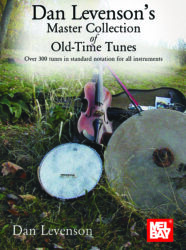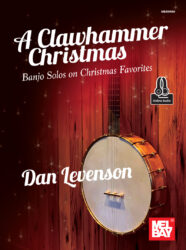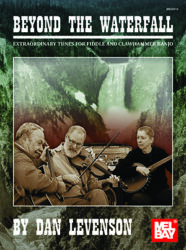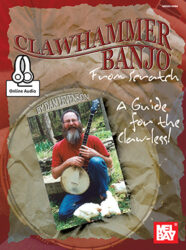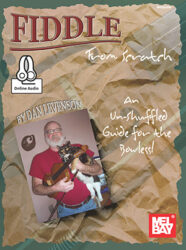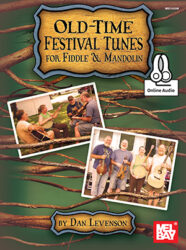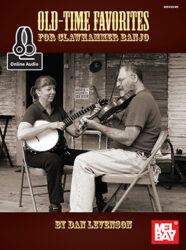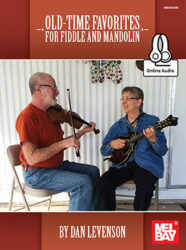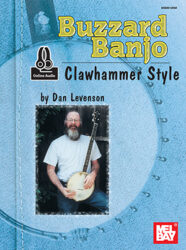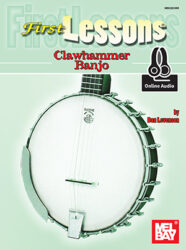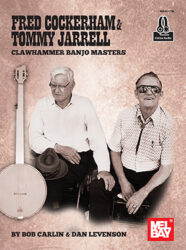Proper playing speeds for today’s old time music
(Don’t play it Half Fast)
By Dan Levenson
I’ve noticed a problem lately with folks not being able to play up to speed. I also must say that I am a bit tired of (usually) self produced CD’s that sound more like practice sessions for technique than music. I got one a couple of years ago that left me with no question as to who this person went to for “instruction”. He also never got the concept of how to play music even though he felt advanced enough to distribute his attempts at it to anyone who would listen. IF I had reviewed it I would have had to deem it slow and sloppy.
There is a spreading the fiction that Old Time music should be played slowly. It is obvious that many have NOT listened to those who came before them and it would appear that the students are not listening either. I also to put most of the blame on what is called the “slow jam”.
I remember encountering something called a “slow jam” at the Festival of American Fiddle Tunes in Port Townsand, WA. I can’t say that I formed an opinion about the concept or practice of slow jam at that time and it was several years until I would run across that concept again. It was on one of my first trips to the Evart, MI for the Acoustic Music Funfest – a large old time music festival catering primarily to hammer dulcimer players and sponsored by the ODPC (Original Dulcimer Players’ Club) – that I came across this concept again.
The theory, as I understand it, is that if students get to experience the communal aspects of old time music earlier in their playing experience they will play better quicker and perhaps stay playing longer due to the immediate gratification the slow jam will provide. This might sound like a good idea, but what I see coming from this some 15 or so years after first encountering the concept, is way too many folks that play poorly and slow with little reason or desire to get better or faster. Lately, a growing defense of this lack of speed and technique go something like, “it is supposed to be slow, you folks just play too fast” and “it’s just supposed to be for fun anyway, so who cares.” Unfortunately the slow jam is starting to turn into slow recordings and slow dances.
Not to sound like the musical snob that I have so often criticized myself, I believe our goal should be to excel at playing music with the “yardstick” by which we judge ourselves being the recordings of those we have judged to be the experts of yesteryear, aka “the old guys and gals” who played before us.
You may rightfully ask me who those folks are and how do we judge where we stand in relation to them. I would respond by referring you to the many recordings available of folks such as The Hammons family members, Tommy Jarrell, John Morgan Salyer and bands such as The Skillet Lickers. There is a variety of speeds and styles represented among them from which you can get a pretty good idea of what we could be striving for. Yes, there IS such a thing as too fast. Some of the hyper speed bands of recent date make that clear.
I know I’m probably getting into hot water but no, please don’t go running around saying “Dan said…” Yes, I know there are trusted folks out there telling you otherwise, but as in so many things, you have to do the research to find out. Don’t just take their (or my) word for it. Do the math and then decide for yourself. Here are some observations for your consideration.
When it comes to speed, it is helpful to listen to the older bands and understand what speed they played at. In 2/4 time (2 beats per measure where a quarter note is one beat) the average dance speed is around 120 bpm (beats per minute), which translates to 240 bpm in 4/4 time. This distinction in the time signature is important mostly when it comes to reading written music. Most of the tab and music you see written these days tends to be written in 4/4 so as to avoid using sixteenth notes in the transcriptions. I will use the times as if we were writing in 2/4 for consistency here though perhaps the numeric differences in speed would be more dramatic in 4/4 (ie. 120 vs. 100 bpm is only a 20 bpm difference whereas the equivalent 240 vs. 200 bpm is 40 beats, and more indicative of the actual difference). Please convert as you wish.
I sat with a metronome and some historic recordings most of us have (or should have) as our old time music references and came up with some interesting speeds. John Morgan Salyer clocked in at a range of 120 -150 bpm depending on the tune and instrumentation. Wade Ward was solidly around 138, Tommy Jarrell ran around 120 in band settings, a bit faster when in duos with Fred Cockerham. As to the Hammons family members, Edden played around 116, Burle around 112 on fiddle to 120 fiddle on Turkey in the Straw and 120 on banjo – even on Sandy Boys and Sherman clocks in at 116. The Skillet Lickers played anywhere from 120 – 140 and it bears mentioning that they were very much a stage show band as well as recording artists. In all cases the music was played with much more life and speed than many recent albums. Don’t believe me? Check it out for yourself. It’s easy to do you sit with a metronome and the “old folks’” cds and pick times until they match up cd to speed.
There is always personal taste and situational considerations involved in your choice of how fast or slow to play a tune. Dramatic effect can be had by intentionally slowing a tune down to well below dance speed and certainly songs must be played at a speed where the sung words can be understood. Burn ‘em down speedy renditions can also be used for show effect but these are the exceptions rather than the rules. Too slow and the music stagnates and sound slow and painful, too fast and you can’t play well.
If you want to play well with others, and play the music much as it was historically played, then do what we have always done. Listen, listen, listen! THEN decide how fast you want it and join the jams of your choice. Don’t slow us down just because you can’t keep up. Enjoy working on your speed and skill from the outer edges and speed will come on its own. As it does, you’ll move into the spotlight and the center of the jam that cooks at a speed all its own. And as always…
Play Nice,
Dan

